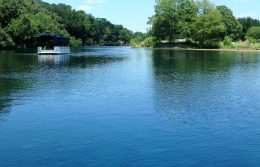The Ultimate Texas State Park Guide: West Texas Edition
Throughout Texas lie an overwhelming nearly 100 state parks. They have all different sizes and sceneries, peculiarities and terrains, difficulties and draws. Whether you’re an aspiring explorer, weekend wanderer, or hardened backpacker, it’s difficult to know where to begin. This guide will orient you to the state parks of each region of Texas to get you on your feet and out the door.
And where else to begin but the wild West? West Texas captures everything that is outsized, spectacular, and unique about the Texas mystique: majestic desert mountains, enormous open skies, and unique natural wonders such as the springs of Balmorhea. There’s no better way to take in this enchanting landscape than at these seven West Texas state parks.
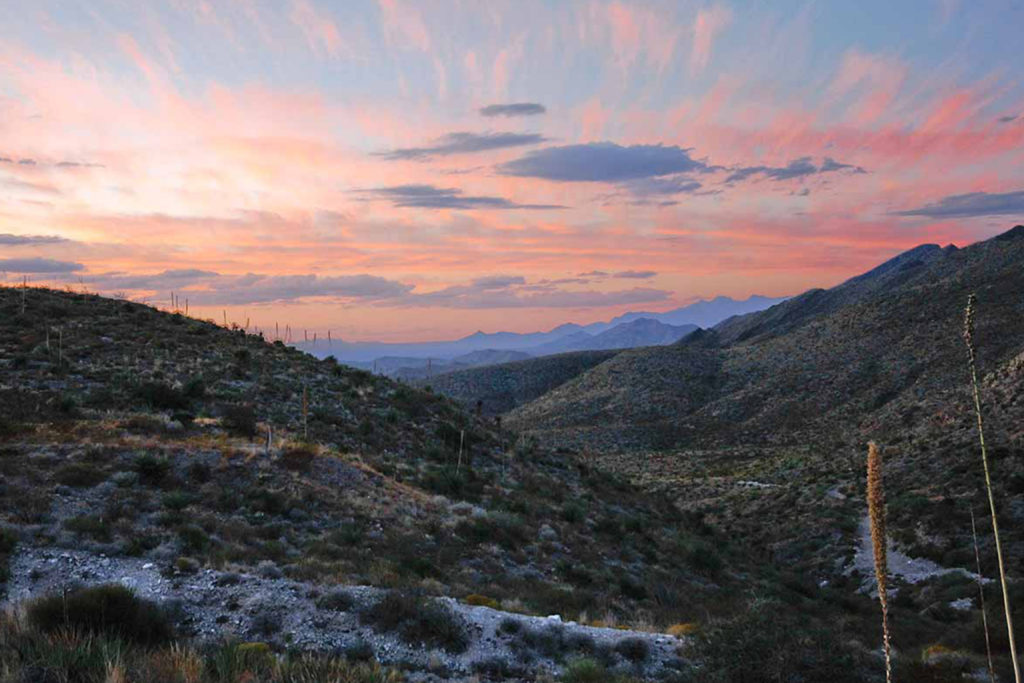
1. Franklin Mountains
Starting furthest west, these jagged desert mountains just north of El Paso rise to a height of 7,192 feet. The mountains were an important resource for the peoples who moved through the gap along the Rio Grande between the Franklin Mountains and the Sierra de Juárez Mountains for some 12,000 years. The mountains also served as a stopover for birds, who migrate across the El Paso-Rio Grande area. Once the site of a tin mine, the mountains were saved from planned development in the late 1970s and turned into a park in 1987.
- Best time to go: Fall
- Popular activities: Hiking, mountain biking, camping, rock climbing, bird-watching
- Wildlife Spotting: The elusive golden-crowned sparrow
- Don’t miss: The El Paso Tin Mines Trail hike to the only tin mines ever located in the U.S.
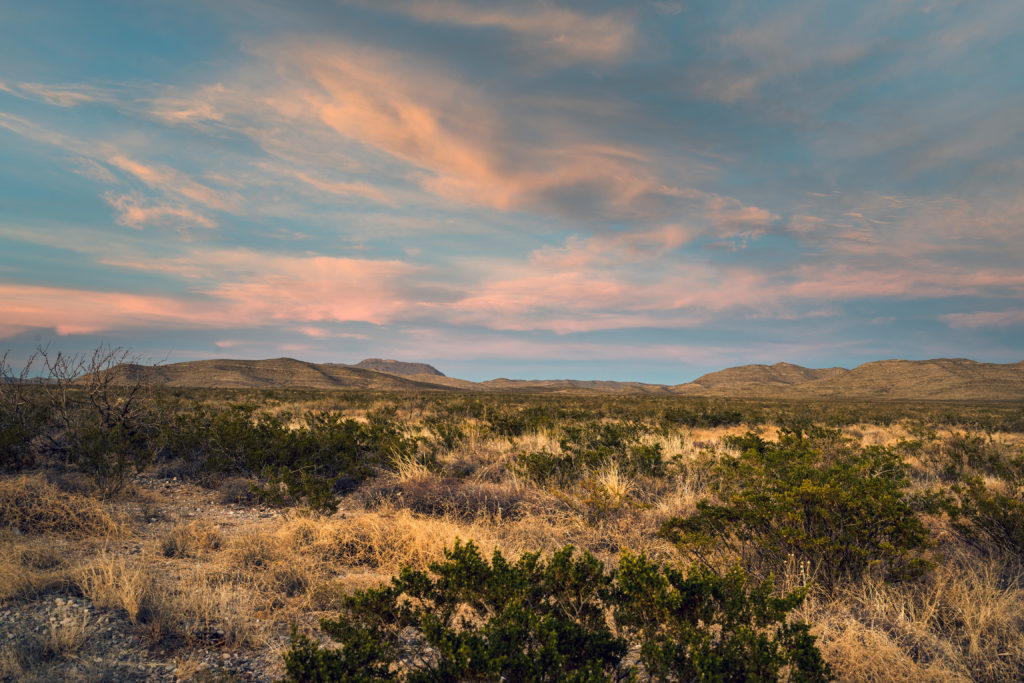
2. Hueco Tanks
One of the true archaeological and geological wonders of Texas, Hueco Tanks State Park and Historic Site has been a sacred desert sanctuary for thousands of years and was recently designated a National Historic Landmark. Its unique rocks and boulders form natural rainwater collectors, which has long proved an invaluable resource in the middle of a stark and arid desert. Today, rock climbers from around the world seek out its challenging boulders.
- Best time to go: Late fall
- Popular activities: Rock climbing
- Biggest challenge: Esperanza — one of park’s the most difficult bouldering routes
- Don’t miss: A self-guided tour of the Native American rock art (It’s one of the most significant sites in the country.)
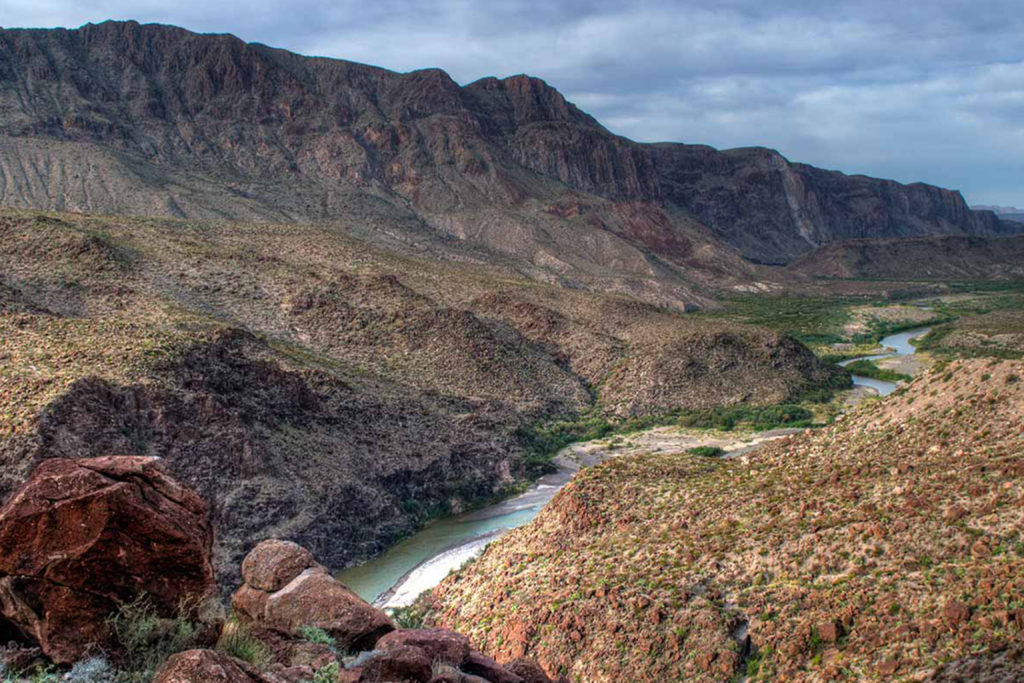
3. Big Bend Ranch
While many head straight to the beloved national park next door, some adventurers know that a few miles west lies the state’s biggest and best-kept natural secret. Big Bend Ranch State Park covers more than 300,000 acres of Chihuahuan Desert. The state acquired the land from cattle ranches, though it still allows free-ranging cattle on the site. But visitors seek out this special corner of the world for its solitude and serenity. Explore canyons, deserts, a waterfall, and unique flora, fauna, and wildlife.
- Best time to go: Spring
- Popular activities: Hiking, backpacking, horseback riding, mountain biking
- Biggest challenge: The Old Government Road Trail,a difficult hike that follows a historic route built by the U.S. Army during the Mexican Revolution, and leads you past an incredible array of geological sites
- Don’t miss: Saying “hi” to the desert bighorn sheep, which have recently been reintroduced to the land
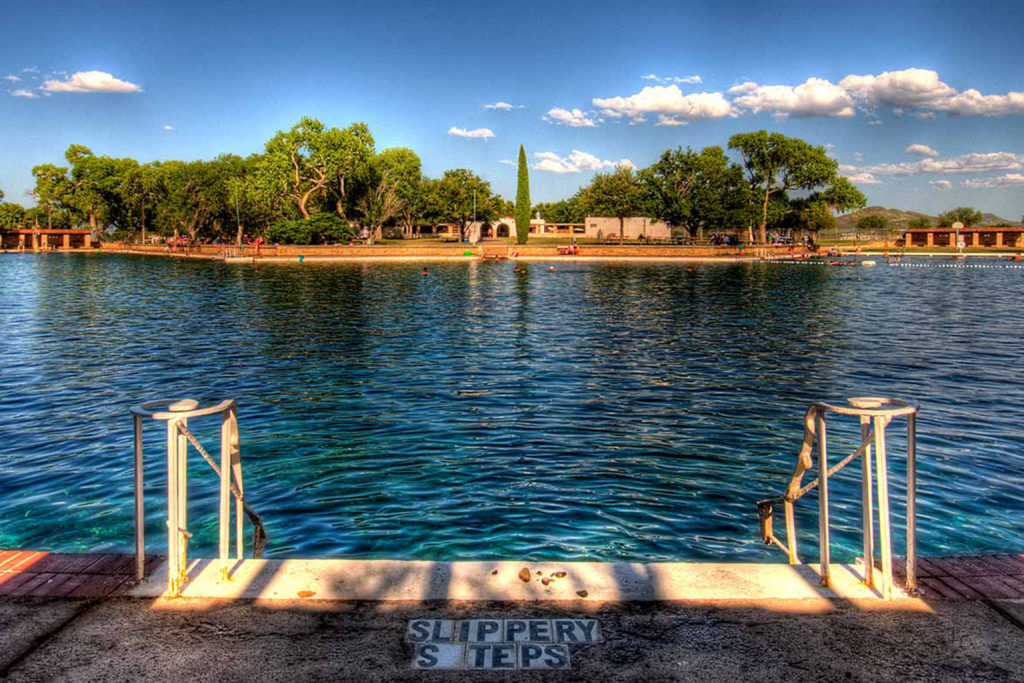
4. Balmorhea
Water in a desert is precious, and wherever you find it, there’s likely to be a story. Balmorhea’s story begins in prehistory. The San Solomon Springs fed natural pools that first attracted Indigenous inhabitants and, later, Mexican farmers. In the early 20th century, those waters brought settlers and the railroad. In the 1930s, the Civilian Conservation Corps built a swimming pool around the springs. Taking a dip in the natural waters — which contain aquatic plants and fish as well as areas up to 25 feet deep — is on every true Texan’s bucket list.
- Best time to go: Spring
- Popular activities: Swimming in the spring-fed pool
- Most unique draw: Bring your snorkel gear and spot sunfish, channel catfish, blue catfish, crappie, and gizzard shad.
- Don’t miss: Camping at the park and enjoying an evening swim followed by incredible stargazing
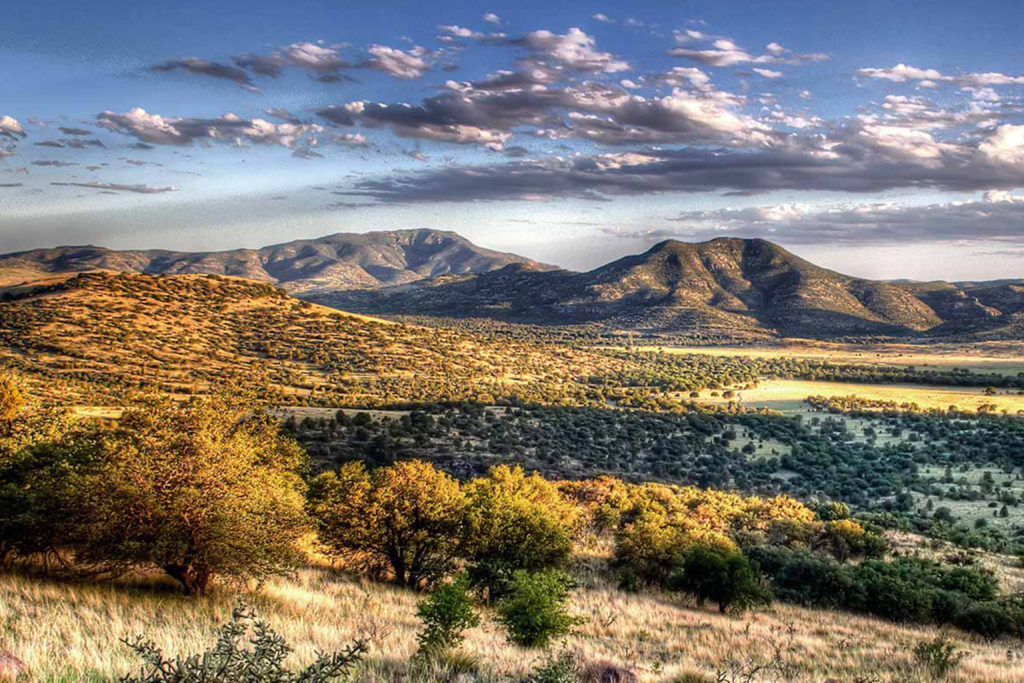
5. Davis Mountains
Just north of little Marfa, Davis Mountains State Park was carved out of former ranch land during the Great Depression, when nearby landowners donated 560 acres for a Civilian Conservation Corps project. The Corps built hiking trails, camping areas, and the popular Indian Lodge, which offers visitors a retro-stylish way to enjoy the beauty of the Davis Mountains while resting in comfort.
- Best time to go: Spring
- Popular activities: Hiking the 2.6-mile Skyline Drive Trail
- Wildlife spotting: Post up at the bird blind and try to spot as many of the park’s 260 bird species as you can.
- Don’t miss: A night at the retro and ever-popular Indian Lodge
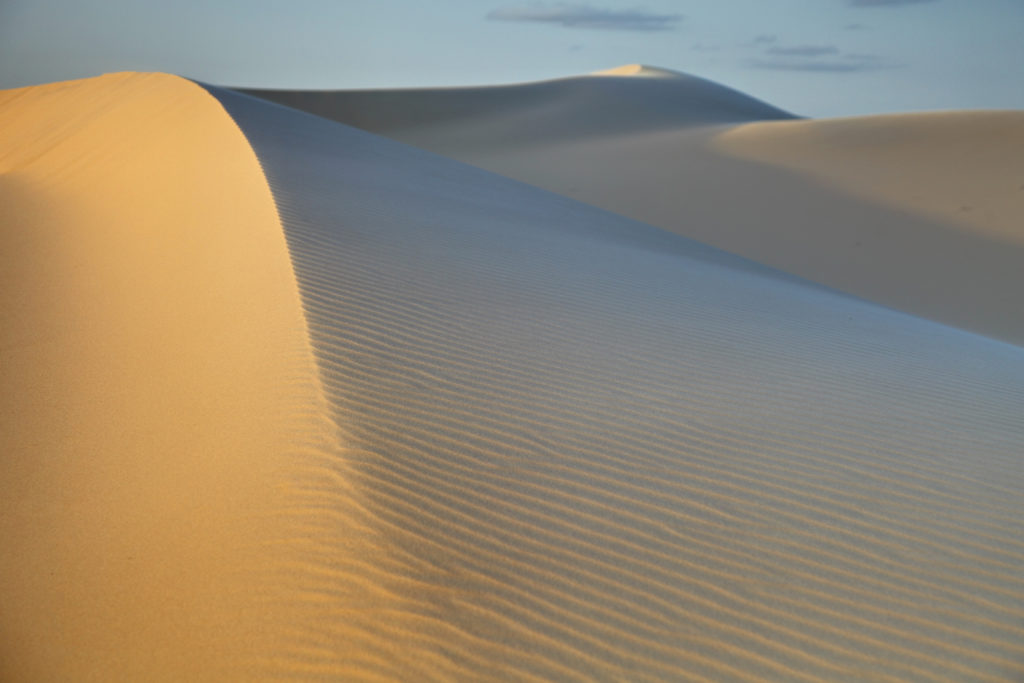
6. Monahans Sandhills
Where else but in Texas can you be driving through a seemingly endless stretch of flat prairie when you suddenly run into a landscape that looks like the surface of Tatooine? Monahans Sandhills State Park’s 3,840 acres lie on a massive quartz sand deposit that began accumulating around 25,000 years ago due to a geological incident. The Llano Estacado escarpment, located to the east of the dunes, blocks wind from moving sediment, causing sand to build up. While the dunes can reach heights of 70 feet and look like a Saudi Arabian landscape, the area technically isn’t a desert, due to available groundwater and an average annual rainfall of about 12 inches.
- Best time to go: Spring and fall
- Popular activities: Hiking, horseback riding, camping
- Biggest challenge: Try not to get lost as you hike the featureless dunes along the park’s nature trail.
- Don’t miss: Renting a “sand disk” to sled down the unique dune formations
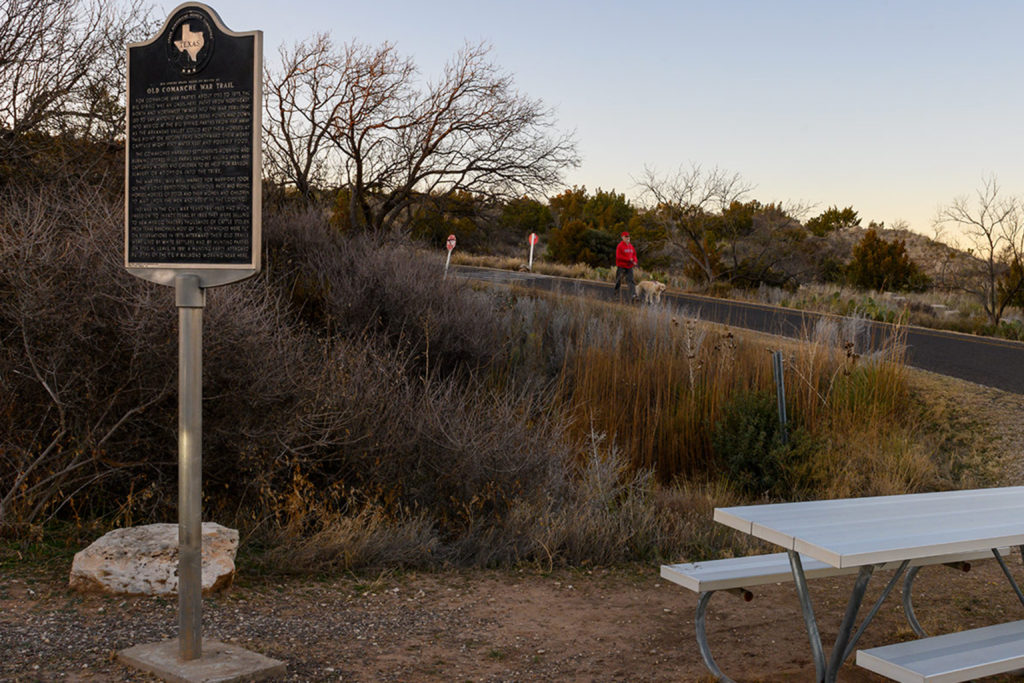
7. Big Spring
On a rare rise of land amidst the flat expanse of West Texas, the waters at Big Spring attracted migrant Native American tribes, Spanish explorers, and U.S. cavalry before they became a popular spot for present-day outdoors lovers. Visitors today can still search for Native American artifacts.
- Best time to go: Fall
- Popular activities: Hiking, biking, jogging
- Biggest challenge: Hike the full loop around the park before ascending the 200-foot bluff.
- Don’t miss: The historic rock carvings
Explore Texas’ 16 national parks here.
© 2022 Texas Farm Bureau Insurance

